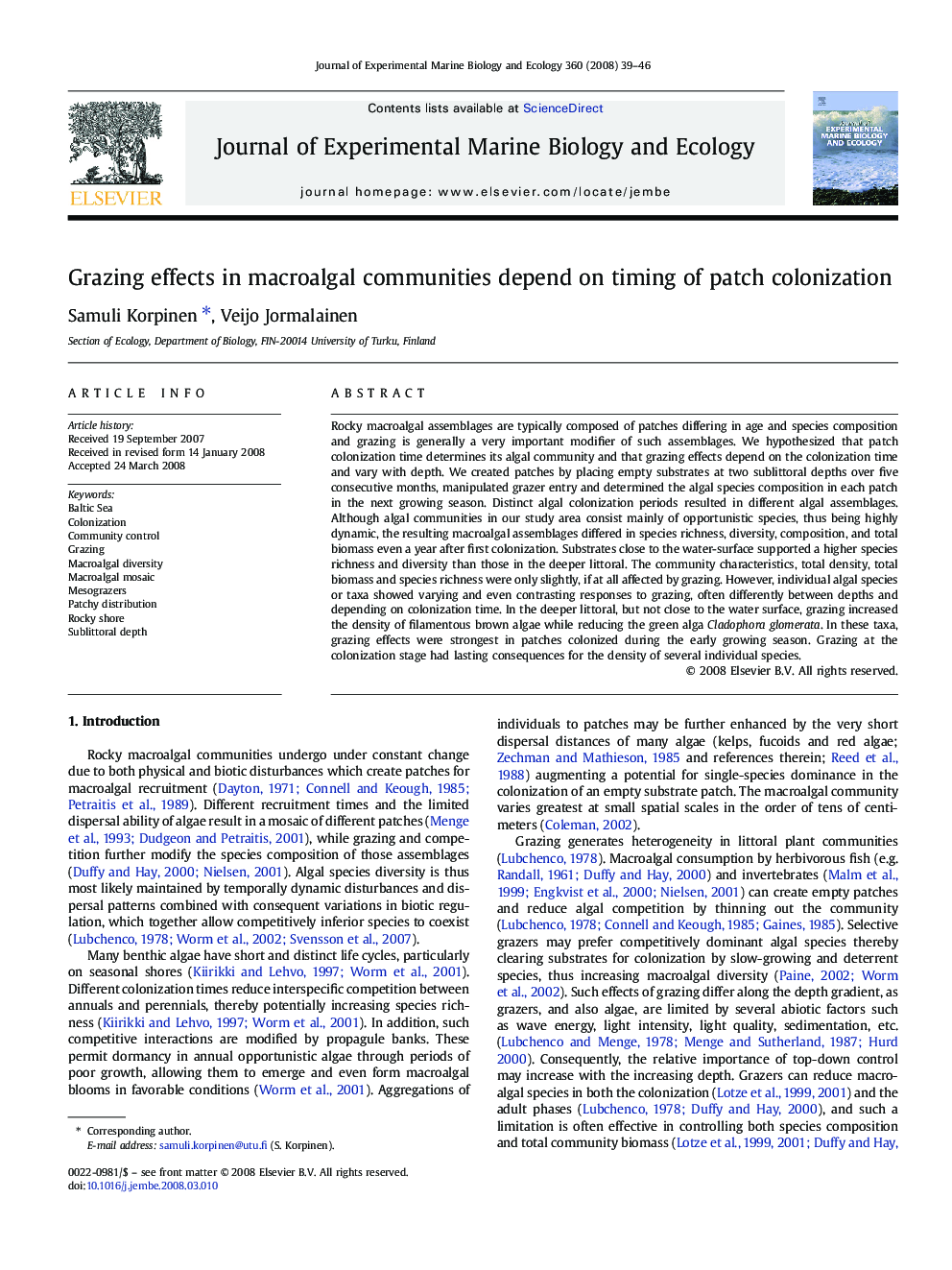| Article ID | Journal | Published Year | Pages | File Type |
|---|---|---|---|---|
| 4397307 | Journal of Experimental Marine Biology and Ecology | 2008 | 8 Pages |
Rocky macroalgal assemblages are typically composed of patches differing in age and species composition and grazing is generally a very important modifier of such assemblages. We hypothesized that patch colonization time determines its algal community and that grazing effects depend on the colonization time and vary with depth. We created patches by placing empty substrates at two sublittoral depths over five consecutive months, manipulated grazer entry and determined the algal species composition in each patch in the next growing season. Distinct algal colonization periods resulted in different algal assemblages. Although algal communities in our study area consist mainly of opportunistic species, thus being highly dynamic, the resulting macroalgal assemblages differed in species richness, diversity, composition, and total biomass even a year after first colonization. Substrates close to the water-surface supported a higher species richness and diversity than those in the deeper littoral. The community characteristics, total density, total biomass and species richness were only slightly, if at all affected by grazing. However, individual algal species or taxa showed varying and even contrasting responses to grazing, often differently between depths and depending on colonization time. In the deeper littoral, but not close to the water surface, grazing increased the density of filamentous brown algae while reducing the green alga Cladophora glomerata. In these taxa, grazing effects were strongest in patches colonized during the early growing season. Grazing at the colonization stage had lasting consequences for the density of several individual species.
